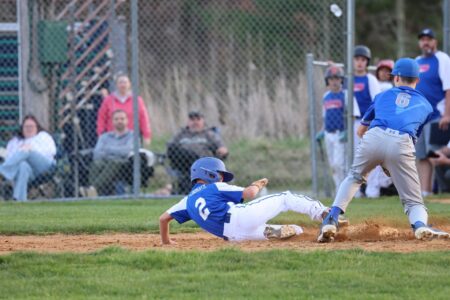There are two months that a major college division men’s basketball player pays close attention to: October and March.
Well, three months: add the first Monday in April when the NCAA Men’s Division I Basketball championship game is played annually.
In case you forgot, the team with the biggest bullseye on its chest this year is Connecticut, which a season ago won the program’s fifth national championship.
Most of the 29 conference tournaments will have been completed before the major conferences – ACC, Big Ten, Big 12, Pac-12, Big East and SEC put an end to the tournaments in anticipation of Selection Sunday (March 17) when the field of 68 NCAA tournament teams is announced.
Everyone has their sleepers, their First Four in, First Four out, Last Four in, Last Four out, and, of course, their sentimental favorites. Mine is Villanova, who won the NCAA title in 2016 and 2018 under now-retired Jay Wright. Wright led the Wildcats to the Final Four two years ago but was soundly beaten by eventual national champion Kansas. Then, with no prior indication that he was done, Wright announced his retirement.
Conference championship tournaments have been the stuff of tradition, but, are they really necessary? There are so many elements to the algorithm that measures the strength of tournament-worthy teams that I wonder if the dozens upon dozens of games leading up to the announcement of the Big Dance should be considered obsolete.
The teams in support of this are the ones in the past who rolled through the regular season to win the conference outright but stumbled in the post-season tournament. The insult to injury is that with mid-major teams, there isn’t enough room for multiple teams meaning the conference winner gets left out of the NCAA tournament.
That these end-of-season tournaments make lots of money for the conferences is no secret. Like college football bowl games, they have sponsors. The NCAA even has an official soft drink and an official bottled water.
And, an unfortunate twist to the games is sports betting. I personally think sanctioned gambling is, next to serving alcohol at college sporting events, a cardinal sin. What a person would overlook when there is a profit to be made. Who really is in control of amateur athletics? Obviously, not the people responsible for the well-being and education of student-athletes.
Notwithstanding the unpleasant backdrop, there is still something special about the next month of college basketball. Every team involved, from the ones with losing records but still competing for a spot in March Madness, is 100 percent focused. The same can’t be said for the 30-some games during the regular season. Can it?
The thrill in victory is exponentially greater than during the regular season, even when an underdog beats the top dog and the students storm the court. The agony in defeat is equally greater the other way.
Arguably, the four best days of the NCAA tournament are the first four days. On the first Thursday and Friday, a total of 16 games will be played each day, with eight more on Saturday and Sunday. By the end of the first weekend, a grand total of 52 teams will be eliminated, leaving the Sweet 16 to vie for advancement.
By then, lots of brackets will have imploded. Others are still in tact, at least in terms of Final Four teams still in contention. No doubt millions of people devise their own brackets, some in hopes of winning money, others for bragging rights, and still others for the challenge.
The biggest thrill is when an underdog pulls off the big upset. It happened in 1985 when 9th seed Villanova shocked top-seed Georgetown 66-64 in the finals.
Who will be the ones to defy the odds this year? The road to March Madness begins next Tuesday with the First Four.

























